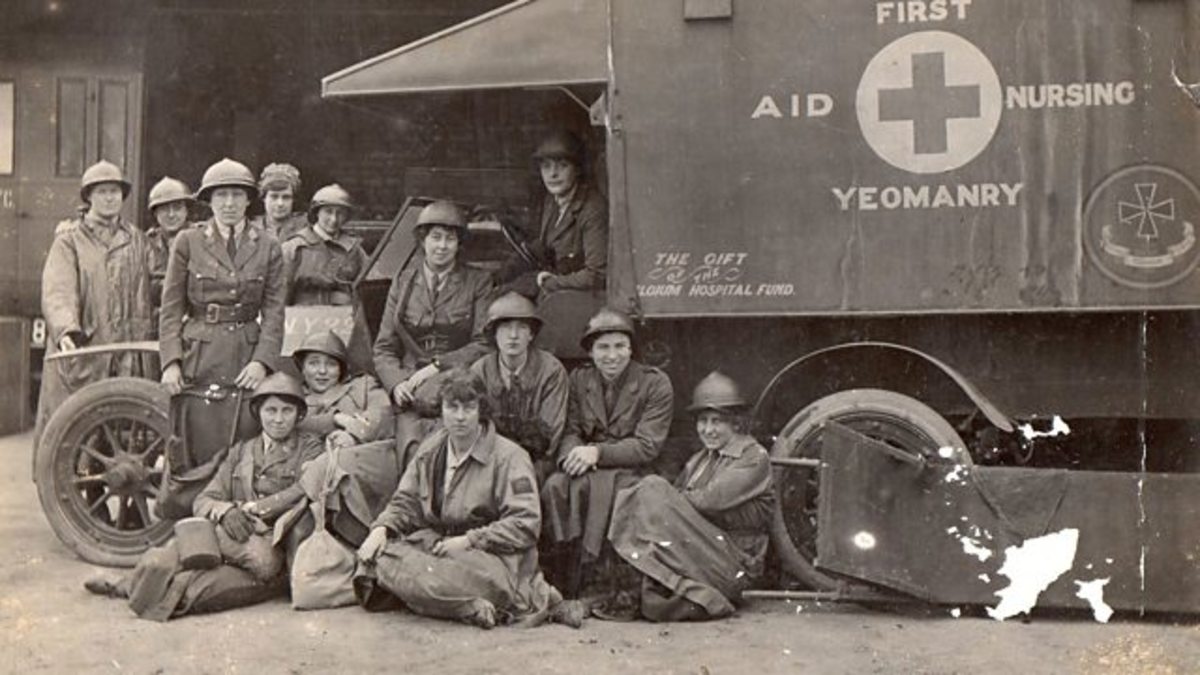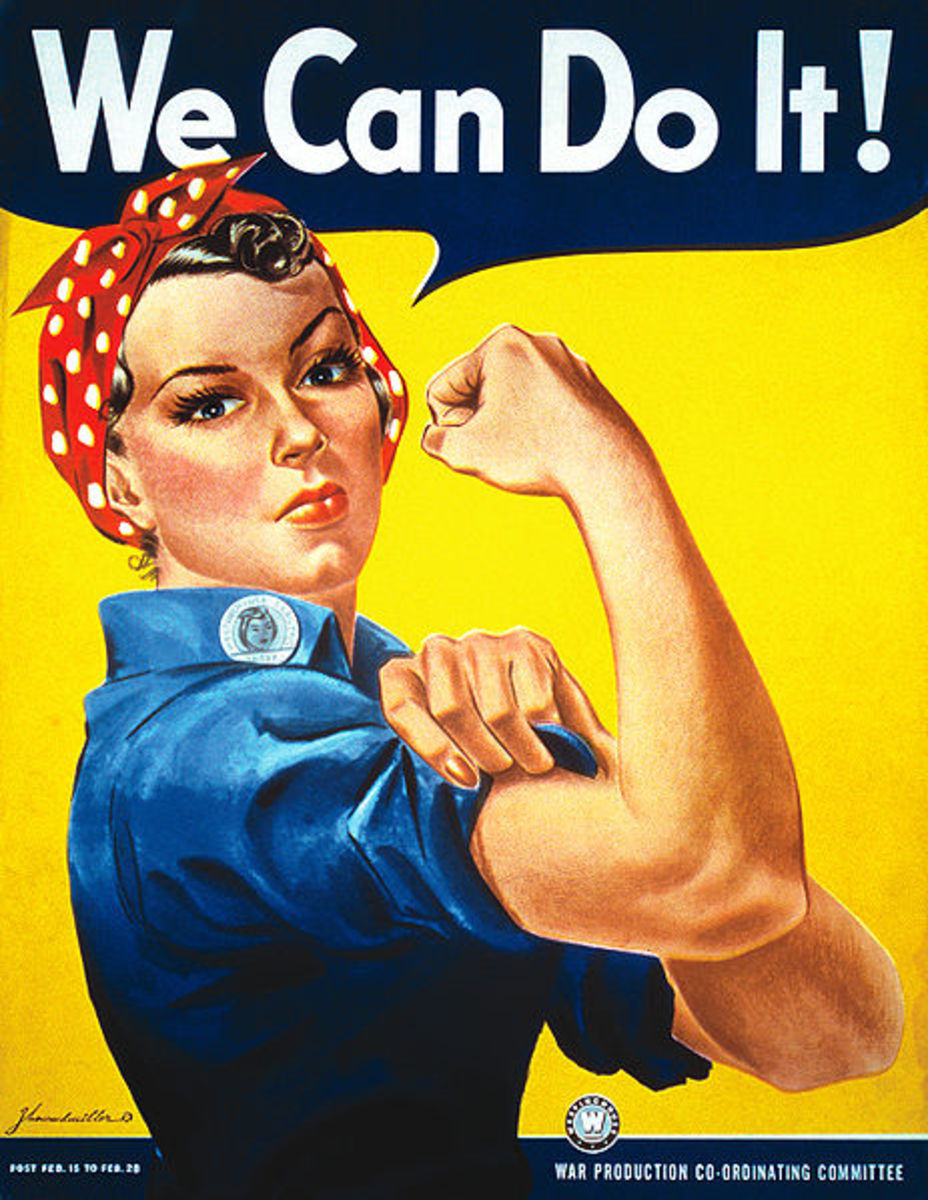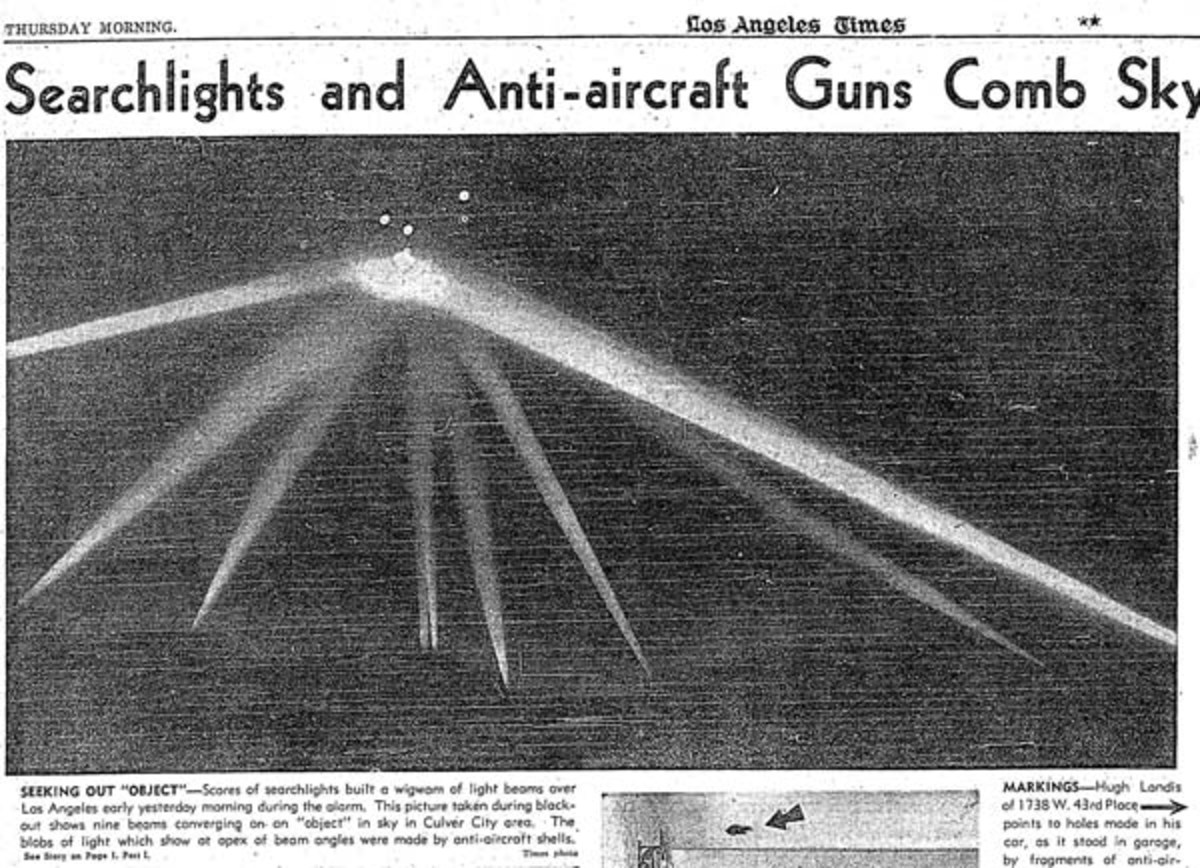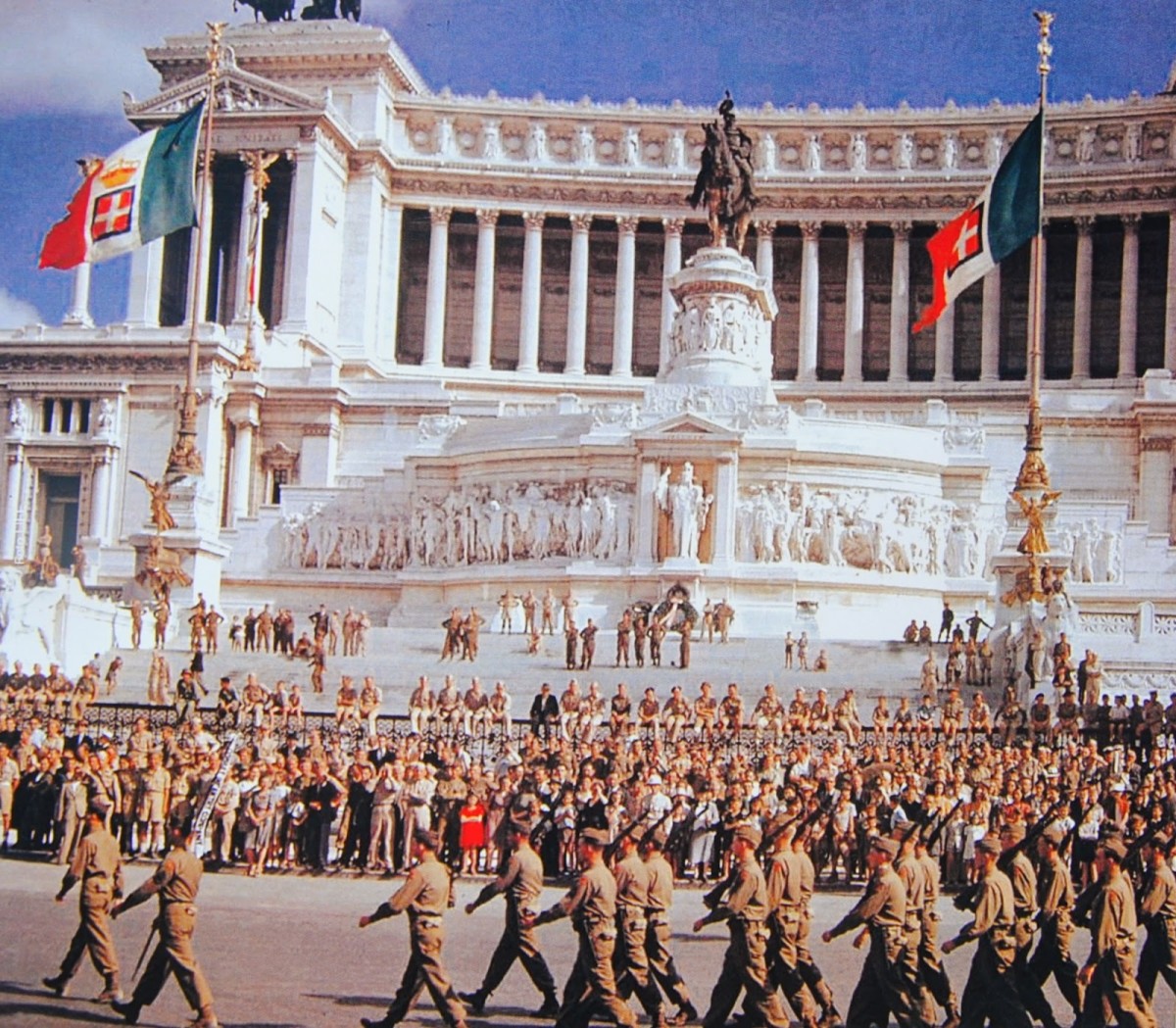- HubPages»
- Education and Science»
- History & Archaeology»
- History of the Modern Era»
- Twentieth Century History
Some Smoking War Tales
Cigarettes used to be Standard Issue for U.S. Soldiers
Most battlefield photos of modern soldiers taken immediately after battle usually depict an unshaven and weary GI with a cigarette hanging from the corner of his mouth.
This is such a common sight in modern wars that it can almost be considered a classic pose. Of course during World War II it was not only the GI who appeared in pictures with cigarettes.
President Franklin Roosevelt had his trademark cigarette holder with a cigarette burning at the end in many of his poses. Prime Minister Churchill was rarely seen without his ever present cigar. And General Douglas MacArthur, the Supreme Allied Commander in the Pacific Theater of the War, was known for his corncob pipe.
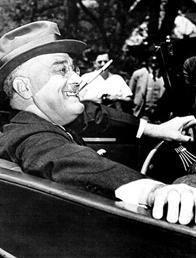
While cigarettes are bad for one's health, so are bullets and bombs. Since bullets and bombs pose a greater and more immediate threat of death than the more distant probability of cigarette induced cancer, many soldiers seem to choose indulge in the latter to relax from the former and more immediate threat.
From World War I to the Korean War the U.S. government included cigarettes in the rations issued to all soldiers at the front.
In the wars since then, soldier's rations have not included cigarettes but the government has continued to subsidize the price of cigarettes at the military PX (Post Exchanges) in combat areas by removing all of the taxes that make up most of the cost of a pack of cigarettes.
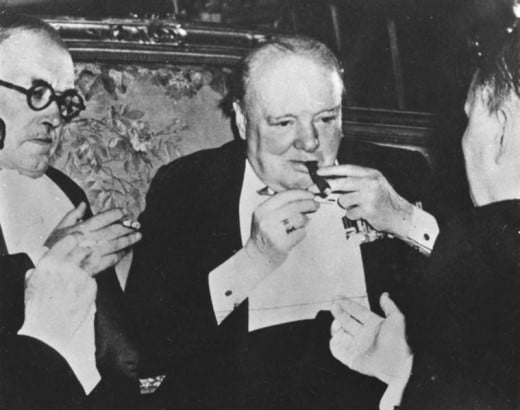
For Over 400 Years We Have Known that Smoking is Unhealthy
As far back as 1604, shortly after the introduction of tobacco to Great Britain from the New World, King James I of England / King James VI of Scotland published a treatise for his subjects in England and Scotland entitled A Counterblaste to Tobacco.
In which A Counterblaste to Tobacco the King described smoking as vile and unhealthy and even went so far as to attempt to ban the use of tobacco in his dominions.
Of course King James didn't succeed, but down through the years science confirmed his diagnosis that smoking was harmful to health and by the mid-nineteenth century many were calling tobacco a health hazard.
My Father, who was an occasional social smoker, informed us as children that cigarettes cause lung cancer, cigars throat cancer and pipes lip and tongue cancer - this was a few years before the Surgeon General of the U.S. in 1964 got around to saying the same thing to the rest of the nation.
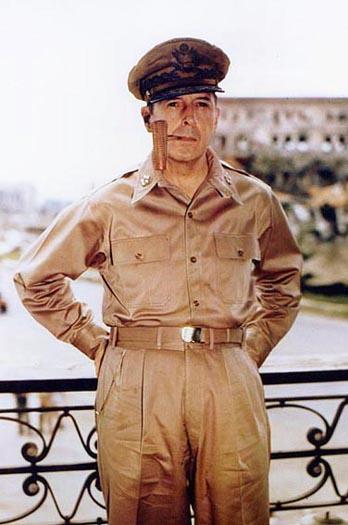
Cigarettes Could be Traded
With a Father who was a veteran of World War II and two great-uncles who were veterans of World War I, my siblings and I as children used to enjoy the stories all three of them told about their military experiences.
One of my Father's stories dealt with how he used to trade his cigarette ration, which he rarely used, for someone else's beer ration (beer was also included with World War II combat rations). Not that he was a big drinker, but working all day in the hot tropical sun of the jungles of New Guinea and the Philippine Islands, one tended to get very thirsty.
Of course there was no refrigeration in the jungle so all drinks were warm - except for my Father's beer cache. Applying a lesson from a high school science class, he remembered that water evaporating from a wet cloth tends to remove heat from whatever it is wrapped around. This, plus the fact that, a few inches below its surface, the ground tends to be a little colder than the surface, led him to dig a hole in the dirt floor under his cot in the tent he shared with others in his unit.
He then wrapped each bottle of beer in a wet rag, placed it in the hole and placed a cover on the hole (probably more to hide it from his buddies than for cooling purposes). After a hot day's work in the sun he was able to relax and slack his thirst with a cool (not cold as this was a rather primitive refrigerator) beer.
Three on a Match is Bad Luck
A couple of times in my life I have heard the expression three on a match is bad luck. I learned the story behind this expression one night when my great-Uncle Willard, who was a heavy smoker, was visiting and pulled out his cigarettes and offered one to my Father and one to another uncle who was also visiting.
One of my younger brothers quickly volunteered to light them and proceeded to light all three with one match before nearly burning himself.
My great-Uncle Willard laughed and said don't you know three on a match is bad luck?
None of us children knew that, so my Father explained that during World War I the soldiers in the trenches quickly learned that keeping a match lit at night long enough to light three cigarettes gave an enemy sniper enough time to first see the light and then to take aim and shoot the holder of the match.
Add one more thing to the growing list of hazards to one's life and health associated with smoking cigarettes.
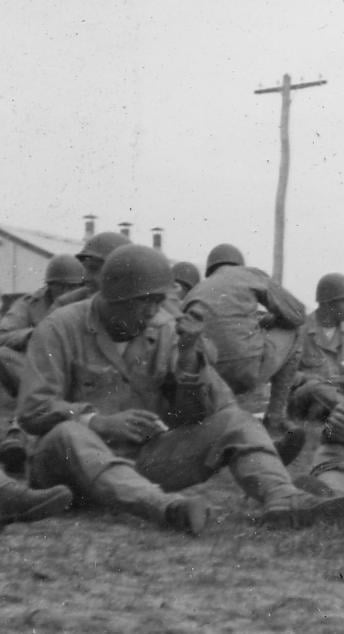
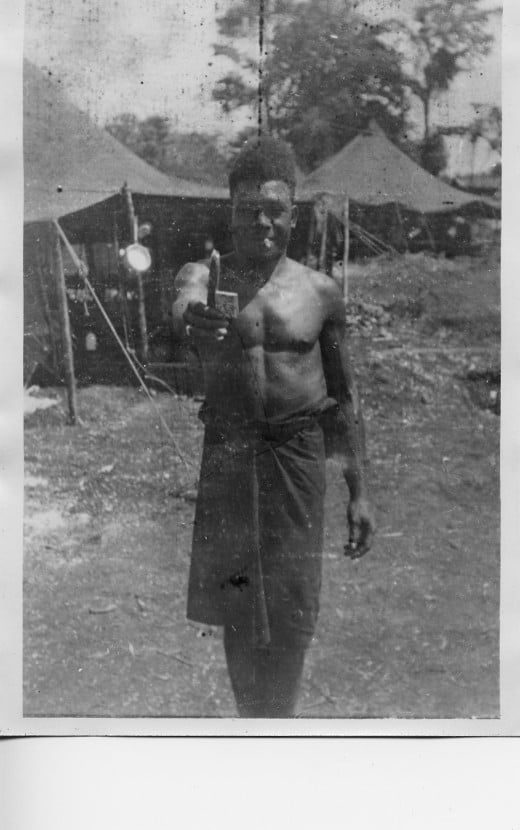
The Colonel Lights up While Visiting the Latrine
One of our favorites was my Father's tale about the Colonel and the latrine. We heard it a number of times around the dinner table and got the original account when my Father, a few years before his death, made a typed copy of the wartime journal he kept and made a photocopy for each of us children. Here is his account of this incident which took place on Goodenough Island off the coast of New Guinea):
Then life settled back into its usual monotonous routine. We would go to work, or sit around till ten, or go swimming. It was boring. Then at the proper moment came one of those incidents that will be talked about as long as anyone from the 16th (his unit the 16th Signal Battalion) exists. Our latrines were of the multiple-hole variety. In order to discourage flies from gathering, some gasoline would be poured in, and then burned. Sometimes the orderly would close the lids before it had burned completely, thus leaving a nice explosive mixture of gas and air. Such a condition existed one day when the Colonel paid a visit to the latrine. He settled himself comfortably, all ignorant of the powder keg on which he sat. Then, and this was his undoing, he lit a cigarette, dropping the still burning match into the potent mixture below. Too late, and in a most uncomfortable manner, he discovered, painfully his mistake. And to think the folks back home were worried about the Japanese getting us. (G.I. Diary, copyright 1942-1945, 1992, by Charles Nugent Sr.)
My Father was in the Signal Corps and thus not involved in direct combat, but his unit was usually near the front lines and hit the beaches of New Guinea and the Philippines as soon as the infantry had pushed the Japanese defenders back far enough to give the Signal Corps room to begin operating.
He often described the war as weeks of monotonous boredom punctuated by hours or days of terrifying combat. The boredom was so great that most soldier looked forward to the next engagement with the enemy.
However, when the engagement started they experienced such indescribable terror that all longed for the boredom to return. This was the cycle he lived through until the war ended and he was able to return to a normal life.
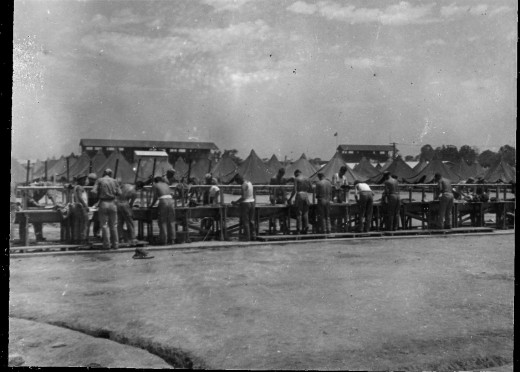
After Viewing a Picasso Painting, I Decide to Never Take Up Smoking
The final cigarette war story from my youth has more to do with financial rather than physical health. However, it is the reason why I never took up smoking despite its popularity during my college years.
For the first two or three summers of high school my brother and I were invited to vacation with my Uncle Willard and Aunt Bessie when they went to New York City to visit their son and his family who lived in Queens.
Their son would rent a cottage for the family at Far Rockaway each summer where he would spend weekends with them while continuing to live in Queens during the week. For his vacation he would move to the cottage and let his parents and us stay in the apartment.
In the mornings we would visit the art museums (my uncle was passionate about art) and other tourist sites and then spend the afternoon and early evening in Rockaway.
One day we visited a small gallery which was exhibiting a group of Picasso's works (Pablo Picasso was still alive at that time and my uncle was a great admirer of his work). One of the works was a picture of a green Lucky Strike cigarette package. Despite the $700 or $800 price we kidded my uncle about buying it since he was a heavy smoker of Lucky Strike cigarettes.
He gave one of his deep throated laughs and replied Hell, they ought to give it to me for all the money I have spent on their cigarettes over the years.
Uncle Willard then proceeded to explain that the green cigarette package was not something that Picasso decided to do in the painting. Instead, Lucky Strike cigarettes used to come in green packages.
However, during World War II the copper used in the green dye was needed for the war effort which made it scarce and expensive. So Lucky Strike changed to their present package and advertised the new packaging with the slogan Lucky Strike Green has gone to war!
We returned to the apartment and, while my aunt was making lunch I attempted to calculate how much my uncle had spent on cigarettes from when he started in 1917 until that time which was about 1960. Despite the fact that cigarettes cost far less then than they do now, the number was still in the thousands - which was high enough to discourage me from ever taking up smoking.
© 2007 Chuck Nugent



